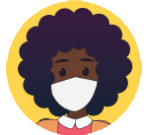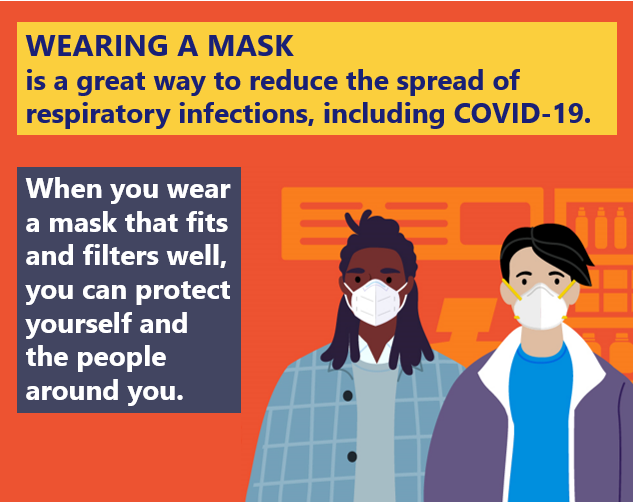


There are some instances when individuals in LA County must mask. This includes, but is not limited to:
In most circumstances, masking may be recommended for individuals in the community based on the level of COVID-19 in the community, as reported by weekly CDC COVID-19 Hospital Admission Levels. In addition, everyone should consider their own individual risk level when choosing whether to mask. Everyone is recommended to mask:
For a mask to work well, it needs to have both a good fit and good filtration:
The best mask has a high-quality filter, fits well against your face, and is comfortable enough for you to wear consistently.
For the best protection, wear a well-fitting respirator. If you can’t use a respirator, you can make your mask work better by improving the fit and filtration.

* Some cloth masks are designed with specialized filter/layers and are tested to demonstrate that they perform at a consistent level. The American Society for Testing and Materials (ASTM) has set a standard (ASTM F3502-21) for barrier face coverings, including cloth ("reusable") masks. The most protective ASTM F3502-21 performance level masks have a particulate filtration efficiency of at least 95%. ASTM F3502-21 performance level ratings for some commercially available face masks are published on the CDC/NIOSH website Barrier Face Coverings and Workplace Performance/Performance Plus Masks. If you are considering purchasing a cloth mask, look for ones with high performance level (≥95% particulate filtration efficiency) and that have been tested by an accredited third-party laboratory.
For detailed information on different types of masks visit:
Important notes:
Tips to check that your mask fits:
The following people should not wear a mask:
For more information on masks and people with disabilities, including those who are deaf or hard of hearing, see CDC Masks: Special Considerations Section.
CDC and CA State mask guidance websites
Additional resources